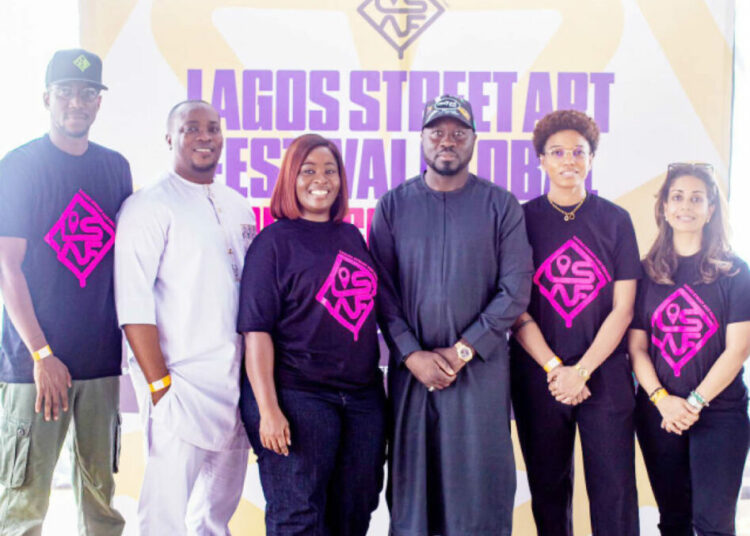Lagos is gearing up for a major cultural spectacle as the maiden Lagos Street Art Festival (LSAF) prepares to transform the city’s public spaces into a living gallery of murals, installations, and creative expressions.
With the theme “Legendary Lagos: City of Dreams,” the event aims to showcase the power of public art to inspire, connect, and redefine the urban environment for residents and visitors alike, with local and International artists showcasing their art across the metropolis.
At the forefront of this movement are two of Nigeria’s most influential creative forces, Osa Okunkpolor, widely known as Osa Seven, and Akinlabi Akinbulumo, popularly called Phisha.
Their leadership marks a pivotal moment for contemporary art in Lagos, where visual storytelling and community empowerment are merging to build a new cultural ecosystem.
Council Member of the Lagos Street Art Festival, Karishma Daryani-Chugani, said the initiative was born to elevate artists who have long been overlooked by mainstream institutions.
According to her, “the festival is creating a platform for non-traditional artists. These are muralists and artists who usually don’t get recognition in formal art spaces. Public art beautifies spaces, encourages reflection, and gives communities something to be proud of”.
With the theme “Legendary Lagos: City of Dreams,” the event aims to showcase the power of public art to inspire, connect, and redefine the urban environment for residents and visitors alike, with local and International artists showcasing their art across the metropolis.
At the forefront of this movement are two of Nigeria’s most influential creative forces, Osa Okunkpolor, widely known as Osa Seven, and Akinlabi Akinbulumo, popularly called Phisha.
Their leadership marks a pivotal moment for contemporary art in Lagos, where visual storytelling and community empowerment are merging to build a new cultural ecosystem.
Council Member of the Lagos Street Art Festival, Karishma Daryani-Chugani, said the initiative was born to elevate artists who have long been overlooked by mainstream institutions.
According to her, “the festival is creating a platform for non-traditional artists. These are muralists and artists who usually don’t get recognition in formal art spaces. Public art beautifies spaces, encourages reflection, and gives communities something to be proud of”.


